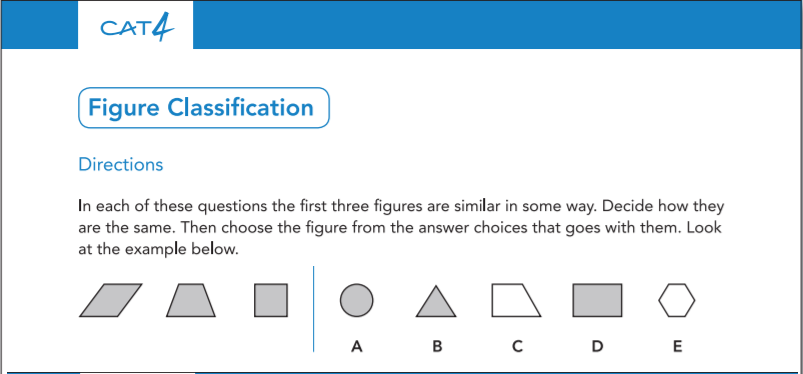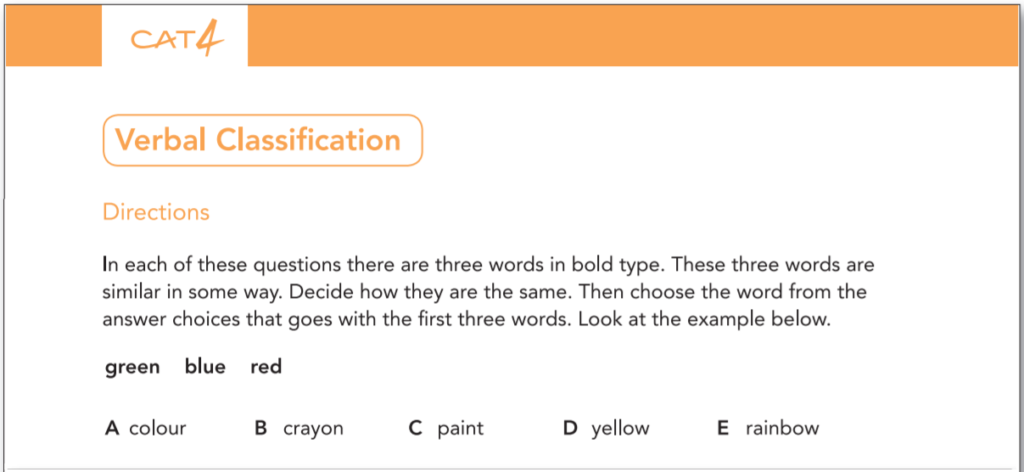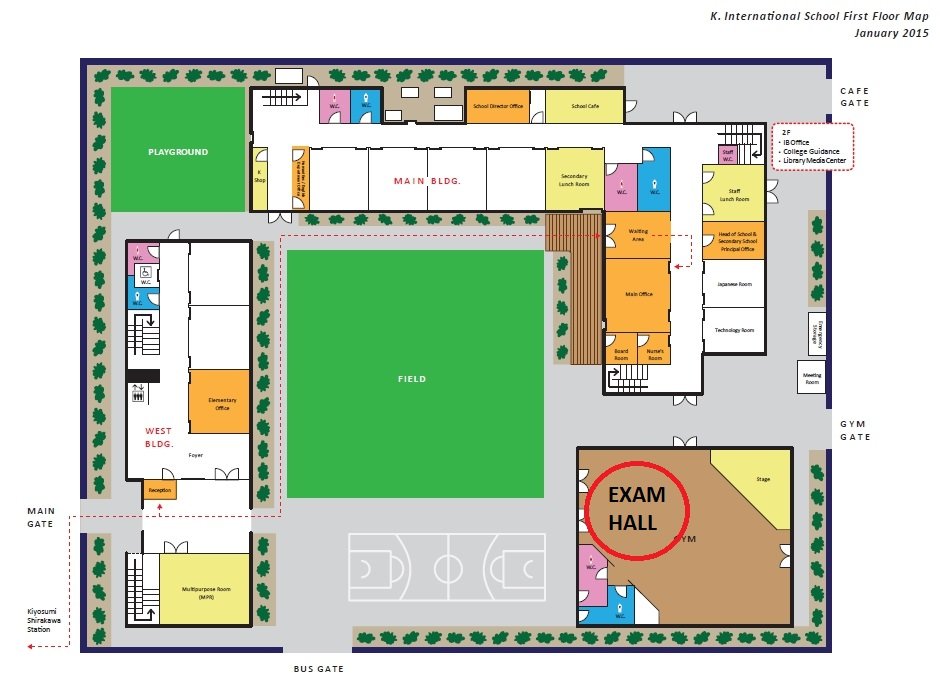What is the CAT4 Test?
The CAT4 test (cognitive ability test) is used to predict student success through the evaluation of verbal, non-verbal, mathematical, and spatial reasoning. It’s a predictive test to help teachers place students in an academic bracket or set. A CAT4 test is used as a school entrance test to assess student ability and future success. Try a CAT4 practice test by clicking here.

The CAT4 test focuses on evaluating different aspects of a child’s learning ability through 8 short quizzes. Understanding a child’s learning ability can help determine if additional support or more challenging work is needed. The CAT4 tests provide valuable information for teachers to indicate the academic potential of a child and how best to deliver education for each child or group of students. However, CAT4 tests do not focus on discovering if a child is an auditory, kinesthetic, or visual learner.
GL Assessment CAT4 Introduction Video Below
CAT4 is developed and delivered by GL-Assessment and can only be purchased by a teacher from a school. The exam is based on years of research and is very similar to an IQ test for adults. The fourth edition (current) took 5 years to develop and has been proven to accurately determine a child’s potential capability and future academic success at both school and university. It has been tested and validated against thousands of students in the United Kingdom.
What Do CAT4 Test Questions Look Like?
CAT4 test questions are designed as “puzzles” rather than knowledge-based questions. They evaluate core cognitive skills that are critical for academic success across all subjects. Here’s a breakdown of the types of questions:
- Non-Verbal Reasoning: Tests the ability to think about shapes and patterns. Shapes and patterns are presented and the student is asked to determine what comes next, or what the patterns are within the shapes.
- Verbal Reasoning: Evaluates a child’s ability to understand and manipulate words. Word patterns are presented with the student asked to determine which words belong, which don’t, and how they are connected.
- Quantitative Reasoning: Focuses on identifying numerical patterns. Number patterns are shown and the student is expected to quickly work out the next value.
- Spatial Ability: Assesses how well a child can assess visual images. Generating and transforming visual images by being presented with shapes and their transformation – the student is then asked to select the final shape.
You can try a free CAT4 practice test by clicking here.
All skills being evaluated are foundational to a child’s ability and academic performance in both curriculum subjects and real jobs. An architect, for instance will need excellent spatial awareness and quantitative reasoning skills. An English teacher on the other hand will need the ability to see patterns in text and use high verbal reasoning skills.

What do CAT 4 Tests Involve?
A CAT4 test battery consists of the following short CAT4 sub-tests with each focusing on different cognitive abilities:
- Figure Classification
- Figure Matrices
- Verbal Classification
- Verbal Analogies
- Number Analogies
- Number Series
- Figure Analysis
- Figure Recognition
The CAT4 is a well-known assessment in many schools across the UK and teachers use it to understand a child’s capability. Click here to find your school and get further details on the type of admission test they use.
What are the Results Used For?
The CAT4 results show a breakdown of the student’s abilities in the four areas mentioned. This can determine if the student is a good fit for the school or place in the right academic group. Generally the CAT4 test is not used in isolation except for admission tests. If a CAT4 is taken at school then the results of more traditional assessments are also used. When the CAT4 is used as a school admission test, an interview is also used to determine acceptance.
Student profiles can be used to understand learning preferences and match learning material to improve educational approach. Placing students in academic sets of similar levels can also help to ensure the pace of teaching is not too fast or too slow.
Can I Revise for Cognitive Tests?
Teachers and schools will strongly advice against revising / practicing for CAT4 tests. If this is the first time your child is doing these types of “puzzle” questions then they will be at a serious disadvantage. Someone who has done similar tests in the past will almost certainly be able to save some valuable seconds to understand the questions. (Check out suggested CAT4 practice activities – click here)
The “cognitive load” can be significant and may mean that your child under performs simply due to him or her never having experienced these types of questions in an online test before. Typically at school we all do knowledge based assessments but these types of “puzzle” questions testing our abilities are rarely undertaken.
It is ethically incorrect to test yourselves on exactly the same questions but to run through a set of tests so the student appreciates the format and the online manner of delivery takes nothing away from the results themselves. Also due to the tests being timed its a good idea to be familiar with the format so valuable seconds are not wasted when doing the real CAT4 tests.
Will Parents Get the Results?
Teachers are provided guidelines on what information and how to share it with parents. The CAT4 Teacher Guide Pack provides further information in this regard but generally teachers are happy to share areas of improvement and the strengths of your child. At the end of the day the CAT4 is a diagnostic test used to determine how we can deliver education better and which areas a child needs to focus on to further develop their skills and become a more rounded individual.
Standard Age Scores
CAT4 test results are expressed in Standard Age Scores (SAS). The Standard Age Score (SAS) is used to compare against performance of peers in the same age group and is calculated using a national sample of pupils. The average SAS is set at 100, with a standard deviation of 15. Scores falling within the range of 85-115 are considered typical and within the expected average performance.
- Above-Average Performance (SAS >115): Signifies above-average cognitive abilities in the specific area tested. This may indicate a student’s potential for excelling in related academic subjects and potential giftedness in those domains.
- Below-Average Performance (SAS < 85): Highlights potential areas of weakness that may require additional support or intervention. Identifying weak areas early on can help educators and parents tailor their teaching strategies to address these challenges effectively.
Implications for Educational Planning
CAT4 test results offer valuable information for educational planning and student support. Identifying a student’s cognitive strengths and weaknesses enables educators to develop personalized learning plans that cater to individual needs. For students with above-average scores, enrichment programs can be tailored to stimulate their abilities further. Those with below-average scores can benefit from targeted interventions and remedial programs to boost their skills and confidence and bring them to acceptable levels.
Try a Practice CAT 4 Test

The practice CAT4 tests on this site are not official tests but use a similar format that can be used to help your child become acquainted with format and medium used. If your child has never sat a computer exam before or answered similar visual / numerical / verbal reasoning questions then he or she will be at a significant disadvantage to other children that have.
To try an example of the format and types of questions that may come up click below.
My Child is Dyslexic – Is CAT4 Testing Still Possible
This is a difficult question and generally depends on what the school hopes to gain from the test. Dyslexia can be mild and severe and everything in-between so its impossible to say 100% that the test will not be possible for a particular student.

Dyslexia can also create more pronounced abilities in certain areas – similar to autistic children. These children may score much higher in non-verbal, mathematical and spatial reasoning but doing poorly on other tests. The tests may also help discover children who have mild forms of dyslexia who up until now have been undiscovered.
For severely dyslexic children it may not be appropriate to run the CAT4 exams. Other tests may be more appropriate so it is a good idea to speak with your learning support advisor at your school to understand your options.





